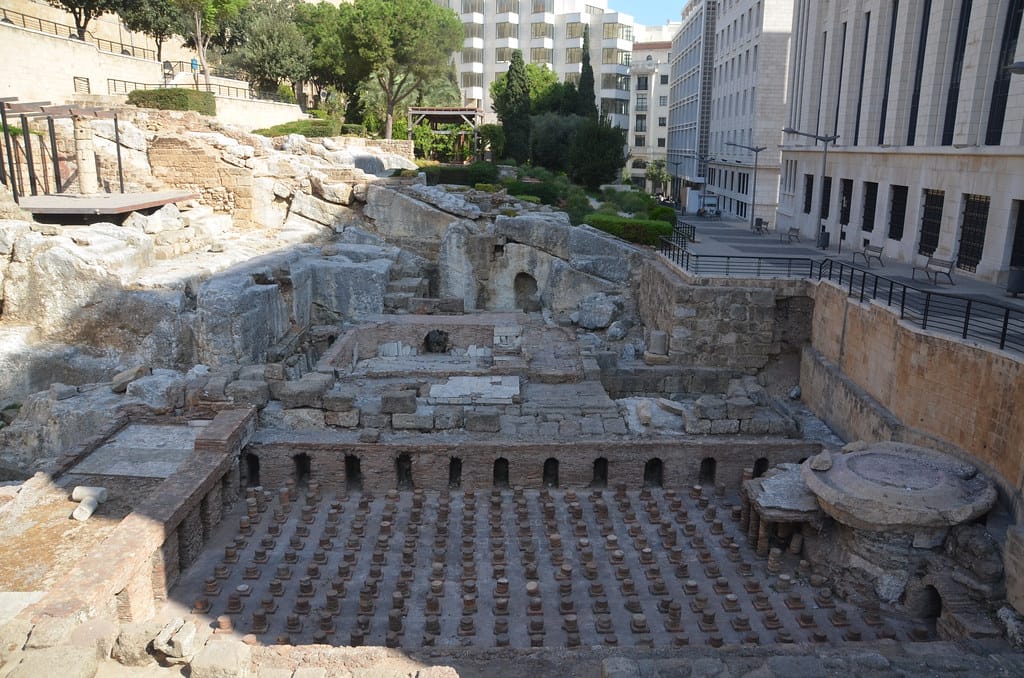Roman Baths of Beirut: A Historic Roman Site in Lebanon
Visitor Information
Google Rating: 4.7
Popularity: Very Low
Google Maps: View on Google Maps
Country: Lebanon
Civilization: Byzantine, Roman
Remains: Sanitation
History
The Roman Baths of Beirut are located in the ancient city of Berytus, a Roman colony established in the region known historically as Phoenicia. Berytus was the first Roman colony in Syria and quickly grew into a city resembling a small Rome, with significant public buildings funded by prominent figures such as Herod the Great and his descendants. Herod himself built a bath-gymnasium complex, marking the beginning of the city’s tradition of large bathing facilities.
The earliest Roman baths in Berytus date back to the early 1st century CE during the reign of Emperor Augustus. Over time, the city developed four major bath complexes, which served as important social and recreational centers for its inhabitants. These baths featured multiple rooms with different temperatures and spaces for entertainment, reflecting Roman bathing customs.
In the 2nd century CE, the main bath complex underwent a major expansion, adopting an architectural style associated with imperial patronage. It is believed that Emperor Hadrian may have visited the baths during this period, highlighting their importance. However, the city’s fortunes declined under Emperor Septimius Severus, partly due to Berytus’s political support for the rival claimant Pescennius Niger.
Despite this decline, the baths were restored in the 5th and 6th centuries CE, continuing to serve the community until the catastrophic earthquake and tsunami of 551 CE destroyed much of Berytus. Remarkably, a bathing facility remained in use into the Umayyad period, lasting until the 9th century CE, showing the site’s long-lasting significance.
Archaeological excavations in the late 1960s uncovered the remains of these baths, and major restoration efforts took place in the 1990s to preserve the site.
Remains
The Roman Baths of Beirut occupy a hillside location in downtown Beirut, between Rue des Banques and Rue des Capucins, near the Grand Serail. The excavated area covers about 1,700 square meters, though the original complex likely extended over 8,000 square meters at its height. The baths were built following an imperial Roman architectural plan, with a layout designed to accommodate large numbers of visitors.
The complex included four main bathing halls arranged in a sequence that allowed bathers to move through rooms of varying temperatures. Beneath the floors, a hypocaust system circulated warm air through pillars and terracotta ducts embedded in the walls, providing efficient heating. Water was supplied through a network of lead and clay pipes connected to external cisterns, feeding marble-lined pools in the hot bath (caldarium) and a large stone basin (labrum) filled with cold water.
Some rooms were designed for massages and relaxation, while others hosted spectacles and social gatherings. Nearby, the remains of a basilica suggest a possible functional connection to the bath complex, though its exact role remains unclear. Over time, the baths underwent modifications and restorations, especially during the 5th and 6th centuries CE.
Today, the site is preserved as an archaeological area with many features still visible in situ. It includes a Mediterranean garden planted with medicinal herbs, reflecting the historical association of baths with health and healing. The remains provide valuable insight into Roman urban life and engineering in ancient Berytus.










